Art World
Go Inside the Italian Hideaway Where Cy Twombly Conceived His Masterpieces
Thanks to a friend, Twombly discovered the picturesque town of Gaeta, Italy.
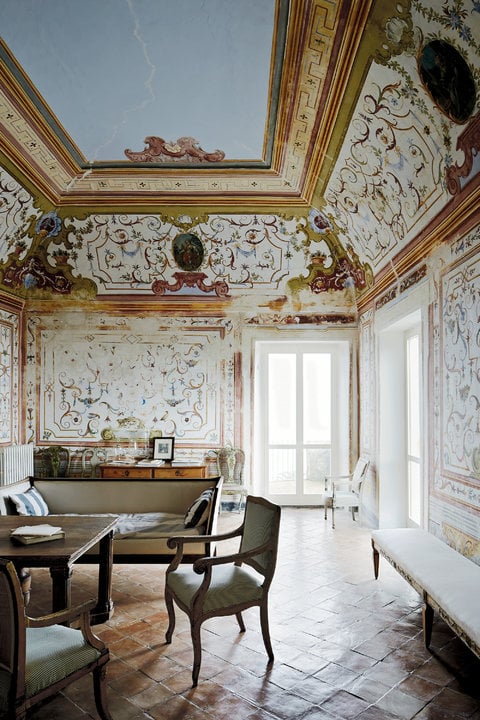
Thanks to a friend, Twombly discovered the picturesque town of Gaeta, Italy.

Cait Munro

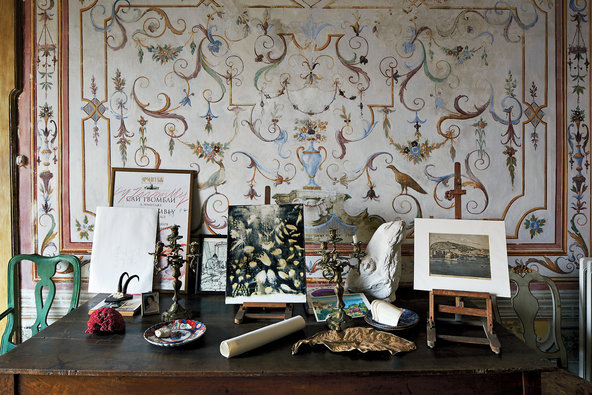
“On a table in the grand sitting room, mementos including a poster for a Twombly exhibition in St. Petersburg, a Ross Bleckner painting, red coral and a leaf from the Seychelles, and a portrait of Del Roscio as a child by the artist Pasquale Di Fabio.”
Photo: Simon Watson/T Magazine
Cy Twombly (see Cy Twombly Sculpture Accidentally Smashed at Menil Collection) is one of a handful of American artists that truly loom large over the landscape of 20th century art. But a number of his most famous works were conceived in the picturesque Italian village of Gaeta, thanks to his longtime assistant, archivist, and companion Nicola Del Roscio, who brought the artist with him to the hamlet in 1979. Until his death in 2011, Twombly split his time between Italy and and his native Virginia.
A recent profile in the spring design issue of T Magazine reveals the breathtaking interior of Del Roscio’s home on the island, complete with a garden and six acres overlooking the Tyrrhenian Sea.
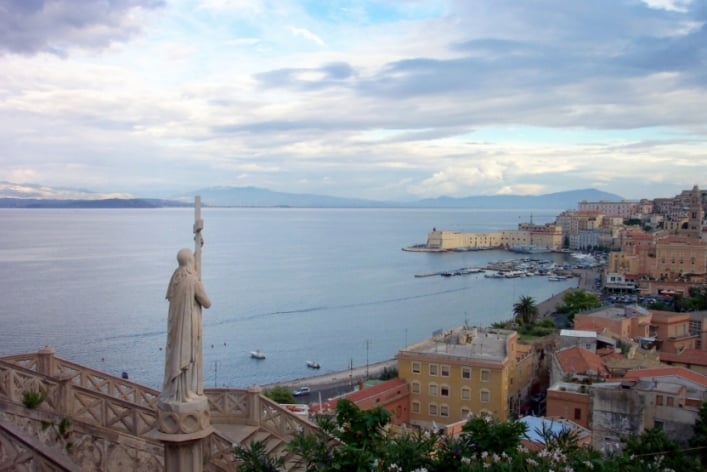
The town of Gaeta, Italy.
While Twombly brought Del Roscio, 16 years his junior, into the fold of the art world, introducing him to Robert Rauschenberg, Jasper Johns, Willem de Kooning, and Andy Warhol, it was Del Roscio who showed Twombly the ways of life in Italy, where Twombly would eventually purchase his own home a short distance from his confidant’s.
According to his close friend Julian Schnabel, it was there that he “lived the poetry of his work.” During his time in Gaeta, Twombly completed the acclaimed “Four Seasons” series, which is now part of the permanent collection at MoMA.
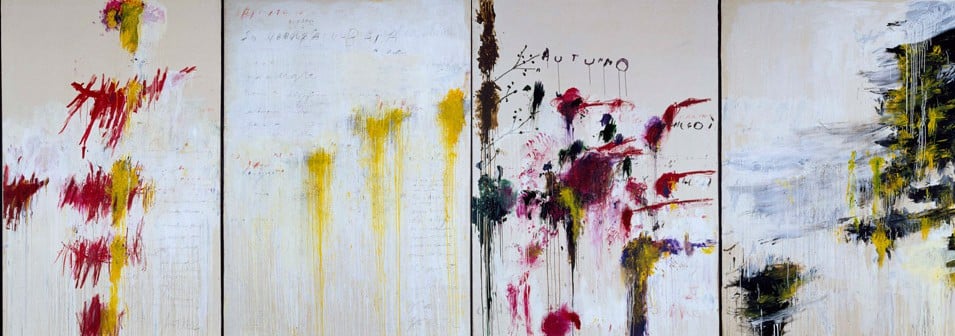
Cy Twombly, Quattro Stagioni (Four Seasons) series (1993-95).
Photo via Tate.
“Cy’s and Nicola’s personalities were so similar, so close, they almost became the same person,” muses Larry Gagosian, who began representing Twombly in the 1990s, and who often sails his yacht to Gaeta to visit Del Roscio.
Del Roscio’s home is filled of memories of Twombly: a framed poster advertising one of his last shows at Gagosian, a copy of a Picasso that the artist painted on top of one of his original pieces, personal letters, Polaroids, correspondence with dealers, paintbrushes, and even Twonbly’s glasses.
“[They are] things I collected for 50 years,” he says. But while the artwork is public, the more personal ephemera lives in a cabinet that does not open for visitors.

“The grand sitting room of the main house that dates from A.D. 1000, on the property of Nicola Del Roscio, Cy Twombly’s archivist and close companion, in Gaeta, Italy, with 18th-century frescoes thought to be by the artist Sebastiano Conca, a sofa from Andy Warhol’s home in Paris and terra-cotta tiles on the floor, handmade in a nearby village.”
Photo: Simon Watson/T Magazine
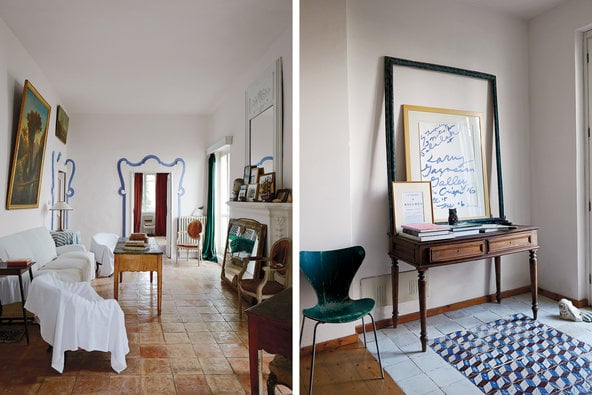
“A rarely used sitting room in the main house, where the furniture is covered in muslin sheets and an antique mirror keeps cold air from entering through the fireplace; the entryway of the house where Del Roscio now stays when he is in Gaeta, with a chair by Arne Jacobsen, 18th-century Neapolitan floor tiles and a poster for a Twombly show at Gagosian Gallery from 2008, framed with a vintage Del Roscio find.”
Photo: Simon Watson/T Magazine
Earlier this week, an untitled 1954 Cy Twombly sculpture was smashed by a visitor at the Menil Collection in Houston, Texas (see Cy Twombly Sculpture Accidentally Smashed at Menil Collection).